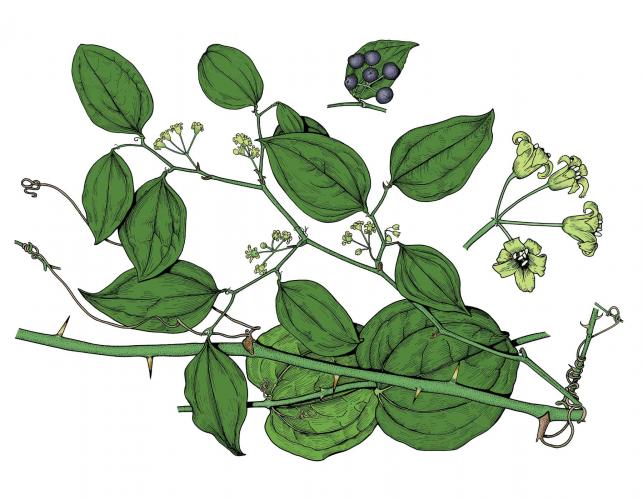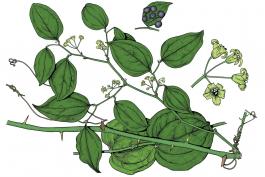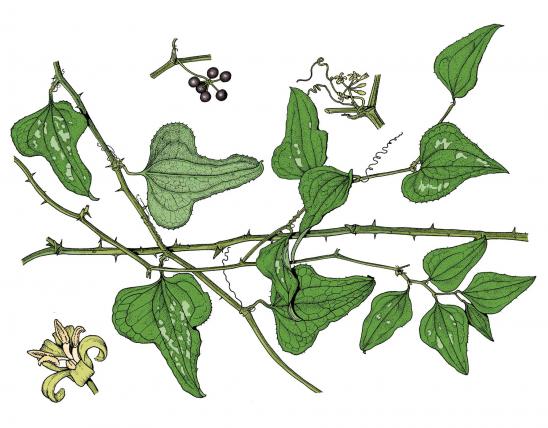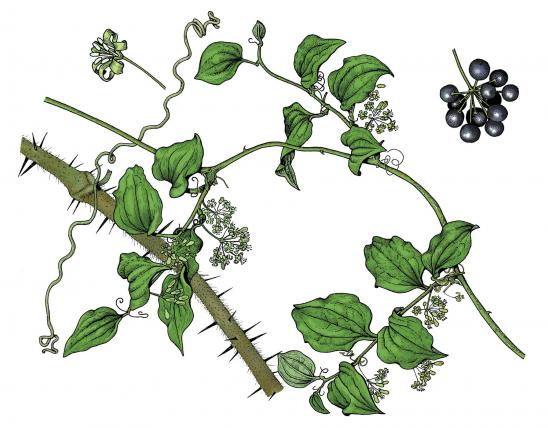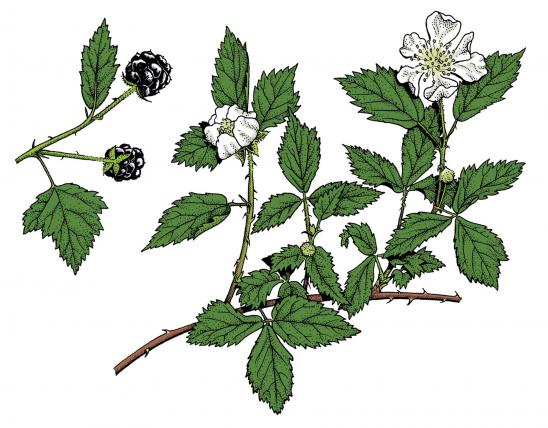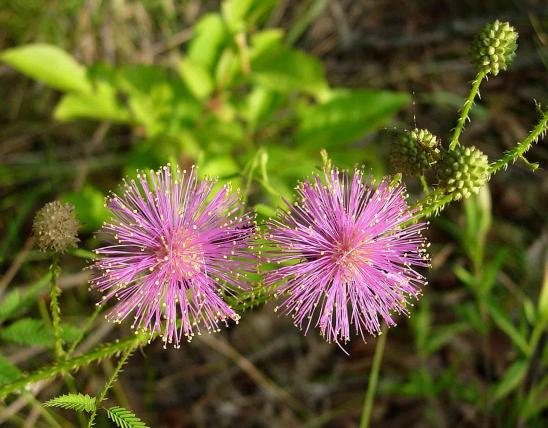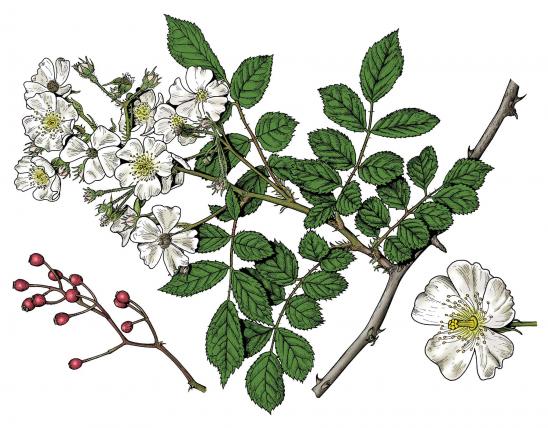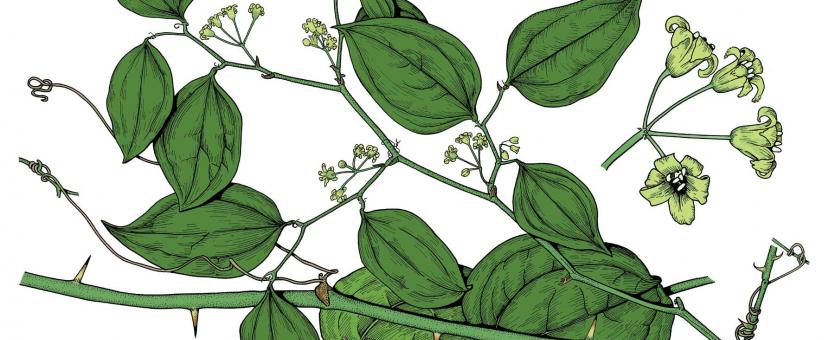
Round-leaved catbrier is a climbing, perennial woody vine to 20 feet long with tendrils and stout spines, sometimes forming tangled thickets.
Leaves alternate, simple, 2–6 inches long, 1 to 6 inches wide, from egg-shaped to circular or heart-shaped, sometimes lance-shaped; margins entire or occasionally with scattered teeth; upper surface dark green, smooth; lower surface smooth, not paler than the upper surface. Blade is thin and leathery. Leaf stalks are shorter than the leaf blades and longer than the stalks of the flower and fruit clusters.
Stems are bright green to brown, smooth or nearly so, usually 4-angled; prickles are green or with a dark tip, flattened, and with a broad base, ⅛ to ½ inch long, scattered, and stout; tendrils arising in pairs at the base of leaf stalks.
Flowering is in late April–May. Flowers are greenish yellow, small, with male and female flower clusters on the same plant, in clusters; petals 6. The flower cluster’s stalk is shorter than or equal to the length of the leaf stalk, ¼–¾ inch long.
Fruits mature September–October. Fruits are round, bluish-black berries, covered with a grayish-blue coating, about ¼ inch thick. Occur in clusters of 3–25. The cluster stalk is shorter than or equal to the length of the leaf stalk, ½–1½ inches long. Seeds 2 or 3 per fruit.
Similar species: If flowers and fruit cannot be seen, and you are only looking at vegetative portions of the plants, this species can be hard to distinguish from S. bona-nox: both have shiny leaves with the veins thickened on the undersurface. However, the leaves of S. bona-nox tend to be thicker, semi-evergreen, and somewhat leathery, while those of S. rotundifolia are thinner and herbaceous or papery.
Stems can be more than 32 feet long.
Scattered in the Mississippi Lowlands (Bootheel) and the adjacent southeastern portion of the Ozarks.
Habitat and Conservation
Occurs in mesic forests and along streams, often in thickets.
Status
The greenbrier family is one of the few groups of monocot plants that can have woody stems. (Other monocots include grasses, orchids, lilies, and cattails.) There are 8 species of Smilax in Missouri; 4 are woody, perennial, and bear prickles (the stems are stout and are not easily crushed), and 4 are herbaceous, annual, and lack prickles (you can easily crush the stems, even when dry). If you have a hard time distinguishing between the different Smilax species, don’t feel bad; professional botanists often have trouble, too, especially if specimens are incomplete.
Human Connections
In spring, the tender new growth of stems, tendrils, and leaves can be eaten as you would fresh greens. Wild edibles enthusiasts give high ratings to the various greenbriers. The fat, tender, fleshy stems of new growth can be snapped off and served as an asparagus-like vegetable served raw, cooked, or in a casserole. Here are some general suggestions:
- You can simply boil or blanch them and serve them with butter.
- You can use them in omelets or stir-fries.
- One casserole idea is to preboil or steam the brier tips and layer them with sliced hard-cooked eggs in a greased casserole dish, starting and ending with the greenbrier. Top with a white sauce, or a white sauce with cheese, and bake.
- Greenbrier shoots can be included in a pickle crock, along with a variety of other wild greens such as grape leaves, cattail shoots, day lily shoots and unopened flower buds, redbud pods, purslane stems, and so on.
The roots of this and other prickly stemmed greenbriers can be used to make a drink similar to root beer, and a sweet jelly can also be made from boiling the roots and adding sugar.
Ecosystem Connections
At least 15 species of birds, plus cottontail, opossum, and raccoon eat the fruit of this plant. The plant is also browsed by deer. The impenetrable, prickly thickets furnish good cover for small mammals and birds.
